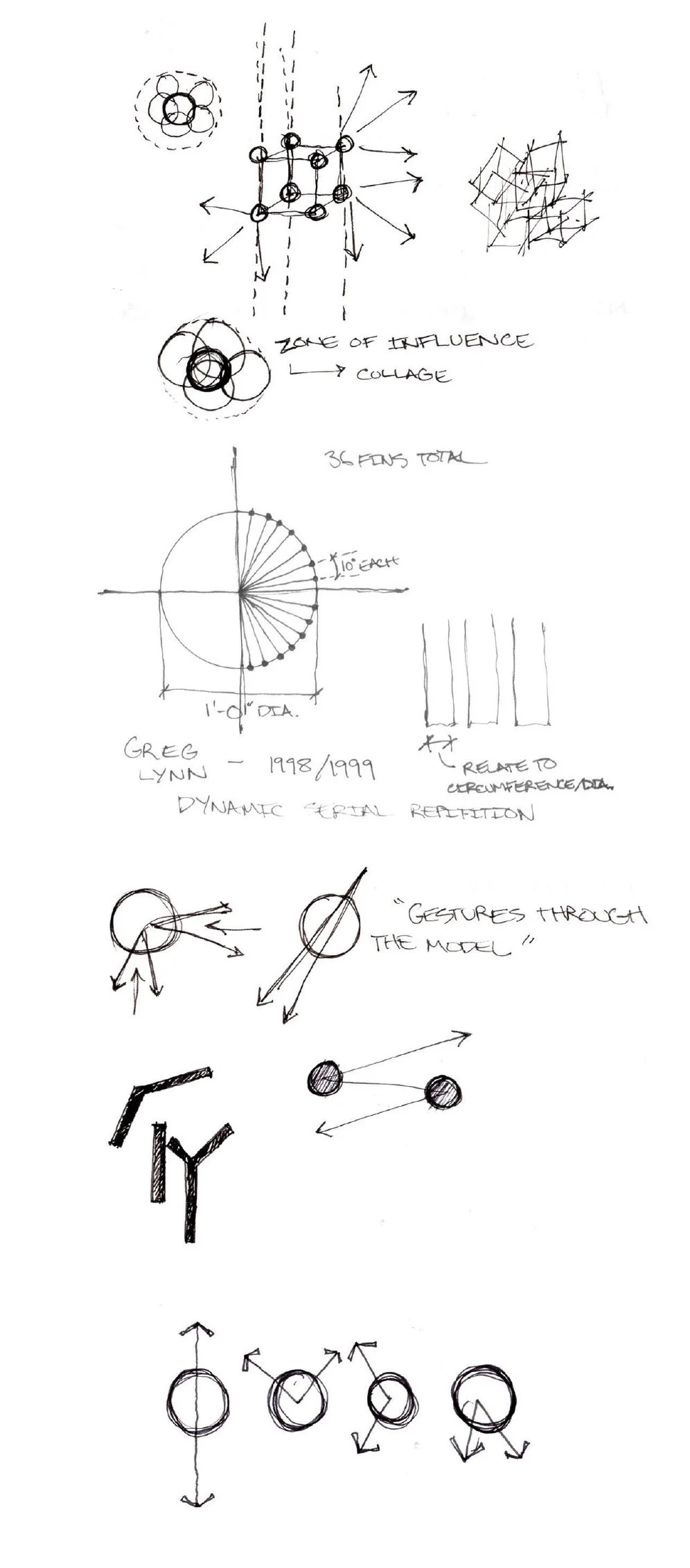
The Performance Envelope
Study created as part of: “Constructing the Gestalt” - Undergraduate Thesis - Virginia Tech (2015-2016)
The performance envelope is a concept discussed by Greg Lynn in his book Animate Form that is a response to typological fixity. Lynn argues against closed static order that underlies a family of various iterations, but instead for “an envelope of potential from which either a single or a series of instances can be taken.”
In achieving a sense of place it is critical to construct the performance envelope. This is because a set of elements governed by a series of relationships not limited to a built instance could potentially make for a heightened cognizance of place in the architecture. The collection of elements maintains an order within itself as well as an order within the place it occupies. Perception of forces that shape a building are essential to a gestalt architecture that defines a greater sense of place.
The study investigates the performance envelope of a series of fins laid out on a circular base. The fins are rotated to create different patterns of light and shadow. By photographing and collaging images together under different circumstances the capacity of the system is uncovered. An additional layer of complexity is introduced to the system when the fins are given a reflective coating. The interaction of light and shadow relative to the fins and reflections brings about three variables Lynn claims must be present in a performance envelope. Perception of the architectural object could perhaps increase cognitive perception of the performance envelope, and therefore the implied whole or sense of place the gestalt architecture looks to achieve.
Constant condition / changing object
Constant object / changing condition
Constant object / changing condition
Constant object / changing condition
© Forrest Bibeau, 2022




